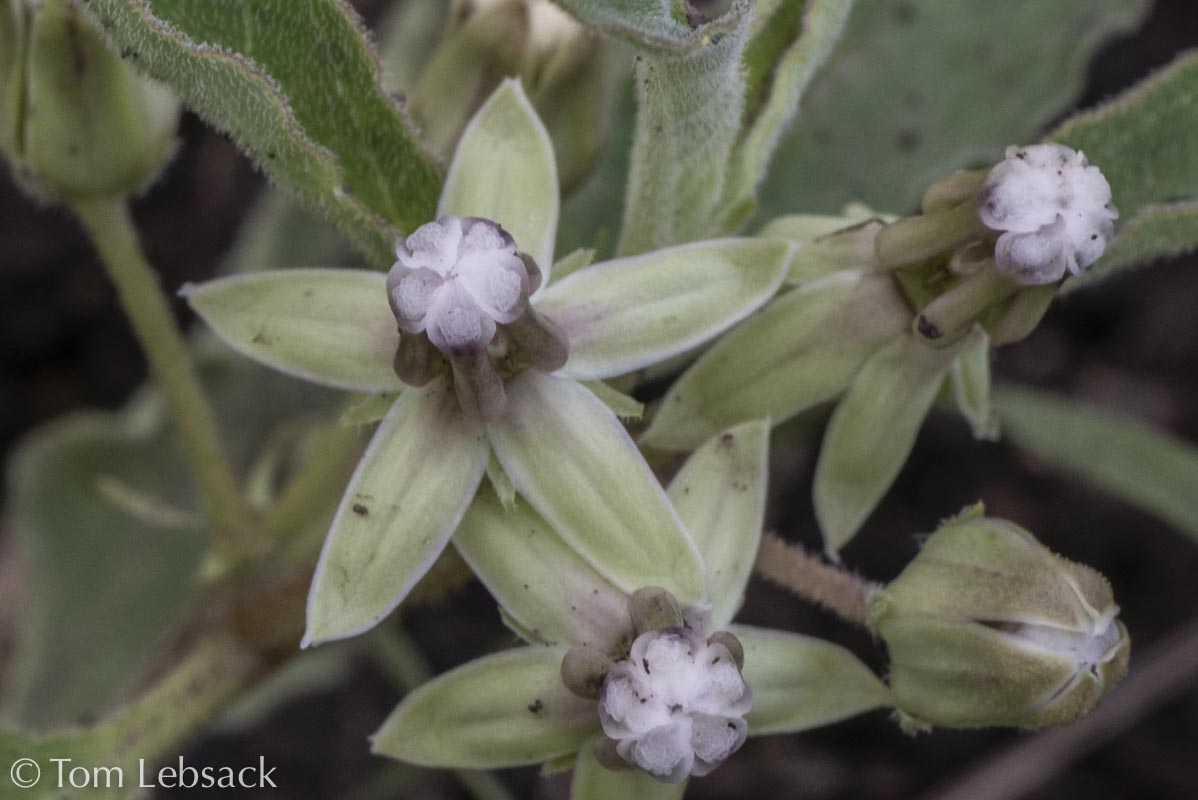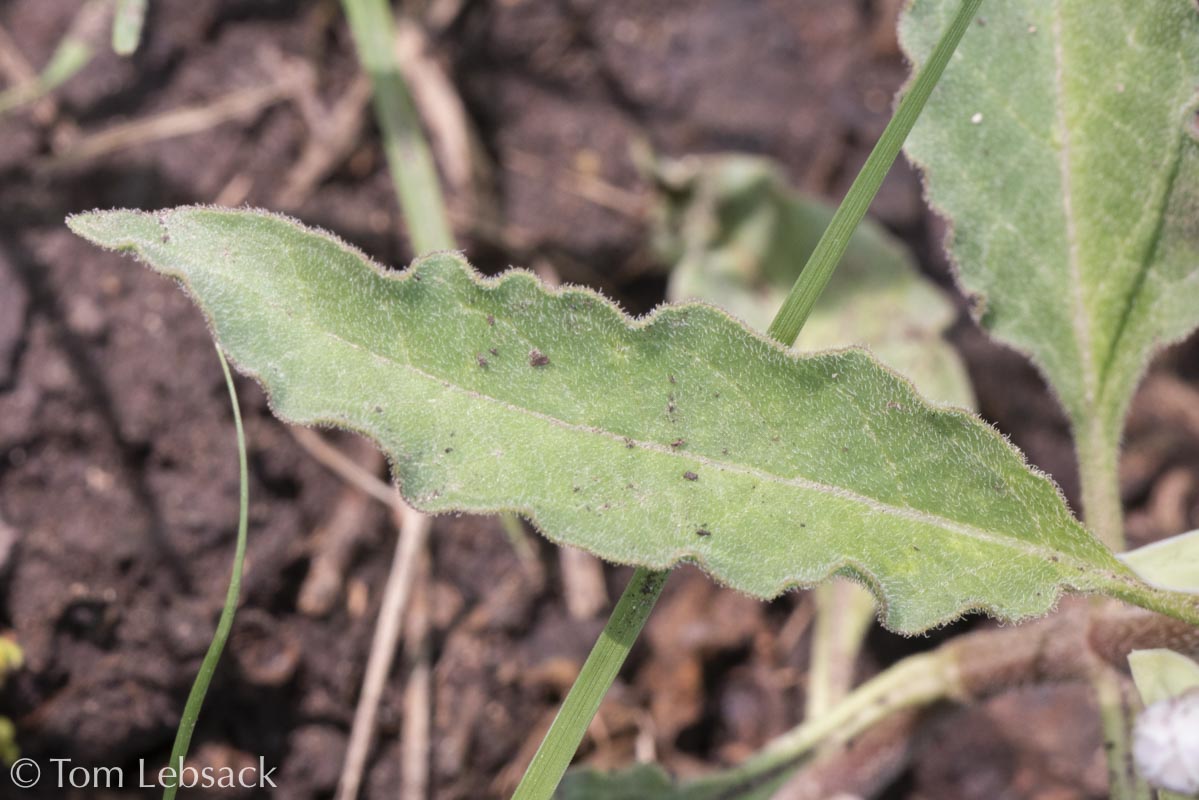Texas Wildbuds
Asclepias emoryi
(Emory’s Milkweed)
| Scientific Name | Asclepias emoryi | USDA PLANTS Symbol | ASEM |
| Common Name | Emory's Milkweed | ITIS Taxonomic Serial No. | 30262 |
| Family | Apocynaceae (Dogbane) | SEINet Reference |
Click Here |
| Description | Habitat: Caliche, calcaerous, sandy, clay, rocky and gravelly soils in open areas, including roadsides, prairies, mesquite grasslands and scrublands. Plant: Low-growing perennial with 1 or a few, erect to spreading stems 2-1/2 to 12 inches tall usually unbranched. Leaves: Pale green, opposite, elliptic to lanceolate or lanceolate-ovate blades 1-1/4 to 3 inches long and up to 1 inch wide on short or no petioles; margins are finely curled or wavy or entire. Inflorescence: Several flowers in an umbel arising from the upper leaf nodes; corolla has 5 white to light green, reflexed lobes; central column with light green/purplish hoods attached to whitish anther head (gynostegium), horns included in the hoods. Bloom Period: March to October. References: "Manual of the Vascular Plants of Texas" by Correll and Johnston, Flora of North America, and "Wildflowers of Texas" by Michael Eason. |
BONAP Distribution Map Map Color Key Map Color Key |
Texas Status: Native |
Banner photo of Castilleja indivisa and Lupinus ssp. taken along FM 1323 north of Johnson City, Blanco County
© Tom Lebsack 2025
Every attempt is made to provide accurate, up-to-date, and relevant information, but the completeness or accuracy of any information presented on this website cannot be guaranteed. I use authoritative references to insure high standards of accuracy and review and update the information frequently.


